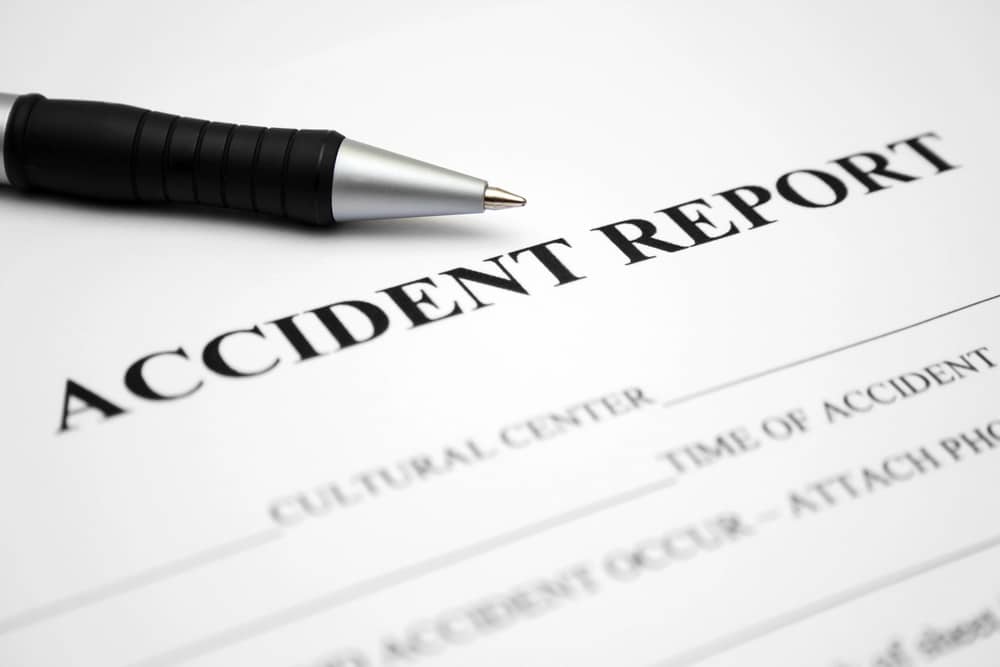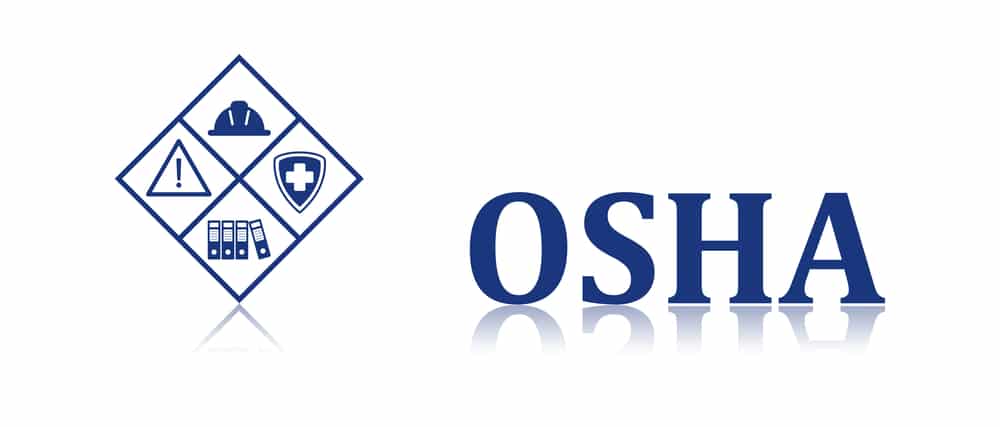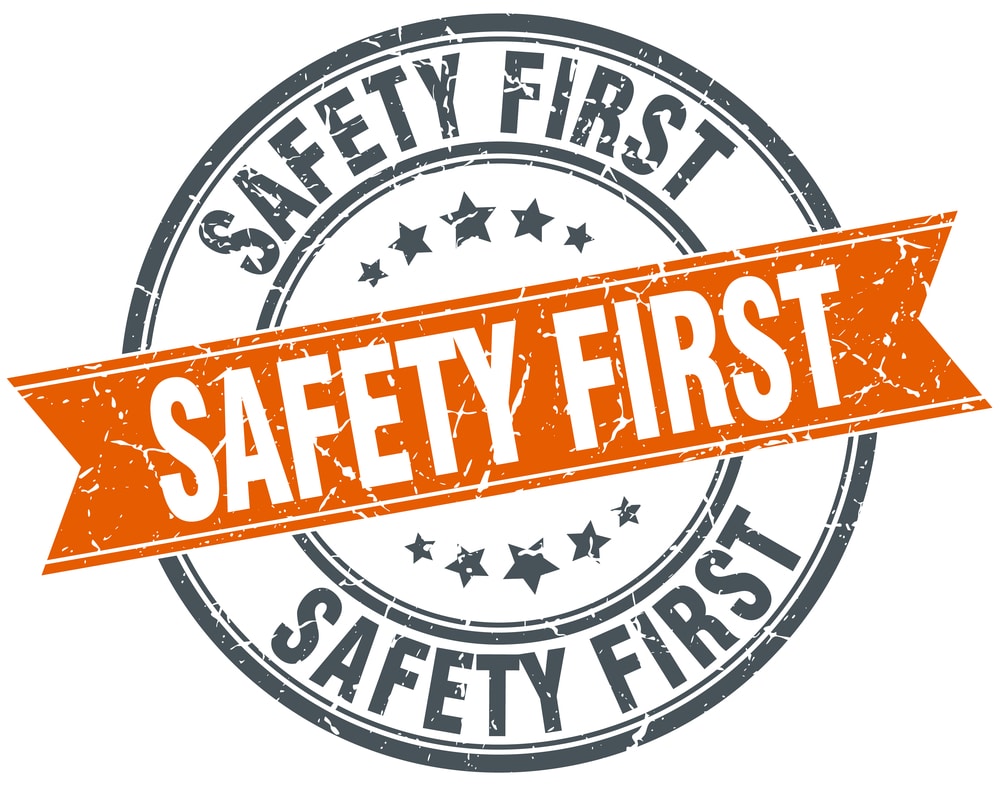How to Write a Work-Related Accident or Injury Report

A workplace accident is never fun. But it can be an opportunity to identify the root causes and improve workplace safety.
In order to do that, you need to understand how to write a workplace accident report. These documents are key to improving safety, but they can also protect the company from legal liability that may result from injuries.
Accident reports are also an important way to figure out how to reduce workplace injuries by understanding where your injuries are occurring. Other tools like a TRIR Calculator, can take injury numbers and see how your company is holding up against other companies in your industry.
This article covers why workplace accident reports are so vital as well as a guide to writing an effective one. Let’s get started!
Why Incident Reports Are So Important
Incident reports generate a lot of paperwork and can require a lot of time from employees, supervisors, and the HR department. However, they are a worthwhile investment of a company’s resources.

Legal Liability
First and foremost, an incident report can help to protect your company from any legal liability. That could mean preventing OSHA fines (more on those requirements later) or protecting the company from a lawsuit from an employee. If your workplace is unionized, there may be contractual requirements as well.
Insurance Claims
When an accident happens, you may need to file an insurance claim. Having a complete incident report with all relevant information can make filing that claim easier. It also protects the company in case the insurance company tries to reject a claim.
Employee Safety and Retention
As a moral and ethical issue, you need to keep your employees safe and document every time a near-miss or incident occurs. But it also benefits you as an employer.
A workplace with a reputation for being cavalier about employee safety issues can’t attract the best talent, and it won’t keep people who have other options around.
What Does OSHA Say?
OSHA doesn’t require that you file workplace incident reports with them. However, they do have specific illness and injury reporting criteria.
Not every incident report you complete necessitates a call to OSHA. But every OSHA-reportable incident should have a thorough incident report.

Your Obligations
If your organization has more than 10 employees (and you aren’t in a low-risk exempt industry), you are required to record serious accidents.
What Is a Serious Accident?
Not every injury in the workplace requires an incident report. However, any incident that causes one or more of the following must be reported:
- Death
- Restricted work duties or work transfer
- Days away from work
- Medical treatment over and above first aid
- Loss of consciousness.
Minor Injuries
Under the OSHA standards, minor injuries that just require first aid don’t have to be reported. This generally means anything that can be treated on-site and can include:
- Giving out OTC medication at non-prescription strengths.
- Using a wound covering like a Band-Aid, gauze, or tape.
- Wrapping a sprain or similar injury in an Ace bandage.
- Removing foreign objects with tweezers or a cotton swab.
- Cleaning wounds.
- Providing ice packs or heat treatment.
- Providing fluids for heat injuries.
Severe Injuries
If an accident causes amputation, death, loss of an eye (enucleation), or hospitalization, you are required to report the incident to OSHA within 24 hours.
If an incident causes the death of a worker, OSHA requires a report within 8 hours.
Maintaining Records
You are required to maintain injury records for 5 years. You also need to provide reports to both current and former employees when requested.
When to Write an Incident Report
OSHA-reportable accidents aren’t the only times you should write an incident report. You should also complete a report:
- When an employee requires work-related first aid, you never know at the time how impactful an injury could be – a small cut could get infected, or a headache could be a sign of air contamination. Better safe than sorry.
- When an employee incident causes property damage, you’ll want documentation if there’s litigation or if the incident is cause for discipline against the employee.
- When there’s a “near-miss.” This is any situation where an injury didn’t occur, but it could have been due to a workplace hazard.
- When an employee is exposed to a potentially harmful substance. In that event, you need to complete an exposure incident report.
- When a 3rd party is injured. If a customer, client, or contractor is injured at your workplace, chances are high that there will be some kind of insurance claim.
- When someone notices a dangerous situation. (You want your employees to report any unsafe working conditions).
- When the workplace has been affected by severe weather or natural disasters. If environmental conditions make the workplace unsafe, it needs to be documented.
- When there’s harassment or bullying. It’s outside the scope of this article, but incident reports in this area are a vital part of protecting the company and ensuring a healthy working environment.

What Are the 5 Elements of a Good Incident Report?
Not all incident reports are created equal. A good report meets these 5 criteria.
Accuracy
This sounds like a no-brainer, but every fact in a report should be correct. Even when you’re working to get things right, it’s easy to to misremember a name or mistype a date. Work quickly, but don’t forget to double-check essential information. That includes:
- The specific location of an incident. Don’t just say the back of the warehouse, say “the southeast corner at the second shelf from the aisle.”
- The parties involved in the incident. Names of the people involved, job titles, and contact details should be included.
- Exactly when an incident occurred. Be as specific as you can, but don’t bend the facts. Say, “at some time between 11 and 11:30” if that’s as detailed as you can be.
- Exactly what injuries, if any, occurred. List the body parts involved.
- Exactly what property damage, if any, occurred as a result of the incident.
- Any immediate corrective action taken. If an employee received a write-up, make sure it’s noted.
Make sure you read your report several times to correct typos.
Objectivity
When a major accident occurs, human nature is to attribute blame or assume a cause right away. This can lead to your accident report being overemotional or even biased.
Stick to the facts related to the accident and hear out all the perspectives. If two people involved have different recollections of the facts, include both perspectives and treat them as equally important, regardless of job title.
Imagine your workplace incident report being entered into evidence at court, which could very well happen if there’s a lawsuit.
Comprehensiveness
While you don’t always know what will be pertinent to an accident investigation, try to make sure you capture all the essential information. At a minimum, this includes answers to the main reporting questions – who, what, when, where, and how.
You also want to include witnesses to the workplace accident. And be sure to list the names of those who will be on your incident investigation team.
Documentation
Photos, diagrams, and even hand-drawn pictures can really add to the understanding of an incident. Describing workplace incidents can be a little tricky sometimes, but a photo can help add clear understanding.
If the accident involved someone driving a car or truck, make sure you get a picture of that person’s driver’s license. If it’s their personal vehicle, get their car insurance details as well.
Validity
A completed incident report should be signed by:
- The injured employee,
- Others involved in the event,
- Witnesses to the event,
- The relevant managers or supervisors,
- The reporter (person completing the incident report).
These signatures will demonstrate that everyone involved agrees on the same basic set of facts. That will help the accident investigation, as well as any disciplinary procedures, go a bit smoother.
How To Write an Incident Report
The actual process of incident reporting can be challenging, but keeping a few things in mind can help.
Do It Fast
Employees need to report any accident or injury to their supervisor immediately and the injured employees should receive medical treatment as soon as possible.
If the accident or near-miss was caused by an obvious hazard, the supervisor on duty should correct it. The supervisor should also feel empowered to issue immediate disciplinary action if there was a clear and serious violation of safety rules.
Speed is also important once the actual report process starts – you should aim to complete your incident report within 48 hours afterward. The most effective investigations tend to move pretty quickly.
Keep It Factual
Speed is important; you want to talk to witnesses involved before they’ve had a chance to forget any key details about adverse events. When you talk to witnesses, ask them very specific questions to get at the underlying facts and root cause of an incident.
- What events led up to the incident? Was there anything notable about the affected employee that day?
- What exactly was the employee doing when the incident occurred? Were they in the middle of a work task? What tools were they using?
- What was the environment like? Was it louder than normal? Was there a spill on the floor?
- Was the employee wearing proper PPE?
- What was the exact injury, and what medical care was given?
- Was there damage to equipment or materials?
Analyze Causes
If your report is going to help prevent similar incidents, you need to tackle why something happened. It can be helpful to think of three kinds of causes in descending order of importance – primary, secondary, and contributing.
Let’s analyze a hypothetical incident through this lens – a forklift crashes into a shelf right off the main aisle.
Primary
A primary, or root, cause is the main reason an accident occurred and it’s generally easy to spot. In the case of a forklift crash, the primary cause is typically driver error.
Secondary
In our hypothetical forklift crash, let’s say the driver was swerving to avoid a pedestrian coming in the other direction. It’s still the driver’s error for the crash, but poor warehouse traffic patterns were a secondary cause.
Contributing factors
Don’t write off contributing causes, either. Often, these causes have safety implications beyond the actual incident.
Let’s say our hypothetical driver tells you she felt pressure from a supervisor to meet an unrealistic quota and she felt she had to cut corners to do it. You talk to other forklift operators and they feel the same way.
Our driver is still at fault for her crash, but the real safety issue is a culture of results at any cost. And it’s an issue that may not have come to light if you didn’t dig deep into investigating accidents.
Make Improvements
Accidents happen, but the goal should be to never have the same type of accident happen twice.
In our scenario, the driver and the pedestrian may face corrective actions for their behavior. And the forklift supervisor may face discipline as well if his behavior contradicts company policies.
But the incident reporting process isn’t about punishment; it’s about reducing other workplace accidents. Make sure you’re not focusing on employee discipline to the exclusion of other factors involved.
In our hypothetical, your incident report may recommend that management review both warehouse traffic patterns and work expectations.
Use tools like TRIR and Dart Calculators to track and measure your injury rates.

How Do You Write an Accident Report Format?
There’s no one answer to what an incident report form should look like. It’s possible your workplace already has a format to use for creating incident reports.
If that’s not the case, there are plenty of incident report examples on the internet. Take a look at several and model yours after the incident report example you like best.
Consider developing an incident report template and keeping it on the company intranet. The less legwork employees have to do to fill out an incident report form, the more likely they are to complete it.
Employee Training on Incident Reports
Everyone at your job site should understand the workplace incident report process. That means training them on what to expect.
Emphasize Importance
Employees need to understand that the reporting process isn’t about “tattling” or getting others in trouble, it’s about reducing future workplace accidents. They should also feel comfortable going to their supervisor if they have a workplace safety concern.
Stress to your workers that it’s not if an incident occurs, it’s when. They should be ready to provide relevant information when asked.
Review the Reporting System
Don’t expect your employees to automatically know how to report an incident; give them a step-by-step guide of what to do if they witness an incident.
Depending on the employee’s job title, that could mean talking to a supervisor or it could mean starting the incident reporting process themself. Regardless, all employees should understand the OSHA standard for reporting fatal and non-fatal accidents.
Tell employees what to expect, too. Remind them of what their supervisor can and can’t tell them about how an incident was resolved. For instance, employees shouldn’t know if another employee received a write-up in response to a workplace accident.
Create a Safety-Focused Environment
The hardest but most important part of the process is creating a culture of safety on the job. A culture of safety doesn’t mean no workplace incidents happen, but it means that incident reporting is taken seriously.
It also means that employees feel empowered to name potential risks that could cause a workplace accident and that those concerns are taken seriously.
Final Thoughts
Understanding how to write a work-related accident or injury report is vital – finding and correcting potential hazards can literally be life or death. It’s worth it to make sure that your organization’s training on reporting is both thorough and useful.